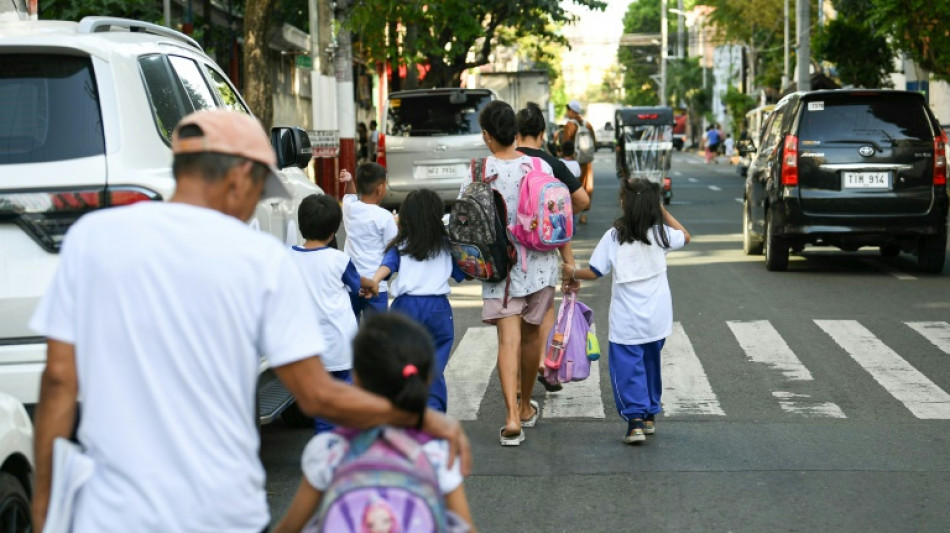
RBGPF
0.1600


Thousands of schools in the Philippines suspended in-person classes Friday, the education department said, as parts of the tropical country endured dangerously high temperatures.
The months of March, April and May are typically the hottest and driest in the archipelago nation but conditions have been exacerbated by the El Nino weather phenomenon.
Many schools have no air conditioning, leaving students to swelter in crowded, poorly ventilated classrooms.
"Even my smartest student is not in the mood to answer questions because it's very hot," said Mayette Paulino, who teaches a grade two class of around 27 children near Manila.
She said "students feel tired and seem sleepy" as the heat intensified in the afternoon.
The Department of Education has issued an advisory giving school heads the power to decide when to switch to remote learning "in cases of extreme heat and other calamities".
Official figures for Friday showed 5,288 schools suspended in-person classes, affecting more than 3.6 million students.
That was higher than the 4,769 schools on Thursday.
Some schools have reduced class hours to avoid teaching during the hottest times of the day.
Bheapril Balbin, 37, whose two young children attend a primary school near Manila, supported the decision for students to stay home during the hot weather.
"The heat is too much, my children couldn't take it," Balbin told AFP.
"Some of their classmates got sick, they had a headache because of the extreme heat. My youngest has an asthma, extreme heat is bad for him."
The heat index was expected to reach the "danger" level of 42 or 43 degrees Celsius (107.6-109.4 degrees Fahrenheit) in several areas of the country on Friday, the state weather forecaster said.
In Manila, the heat index was forecast to hit the "extreme caution" level of up to 40C (104F), when heat cramps and exhaustion are possible.
The country's heat index measures what a temperature feels like, taking into account humidity.
Friday's actual maximum temperature in Manila was 35.5C (95.9F).
"The heat will get worse because we're not yet at the peak of the summer season," Lorie Dela Cruz of the state weather forecaster told AFP, noting the first half of May was usually the hottest period.
She said the actual temperature was "within the normal range" for this time of year.
Nearly 300 schools in Manila had remote learning on Friday.
The central regions of the main island of Luzon were the hardest hit, with more than 1,600 schools suspending in-person classes.
Save the Children Philippines chief Alberto Muyot said on Wednesday the extreme heat meant "children are simply unable to concentrate in the classroom and their health is also at risk".
K.Hashimoto--JT